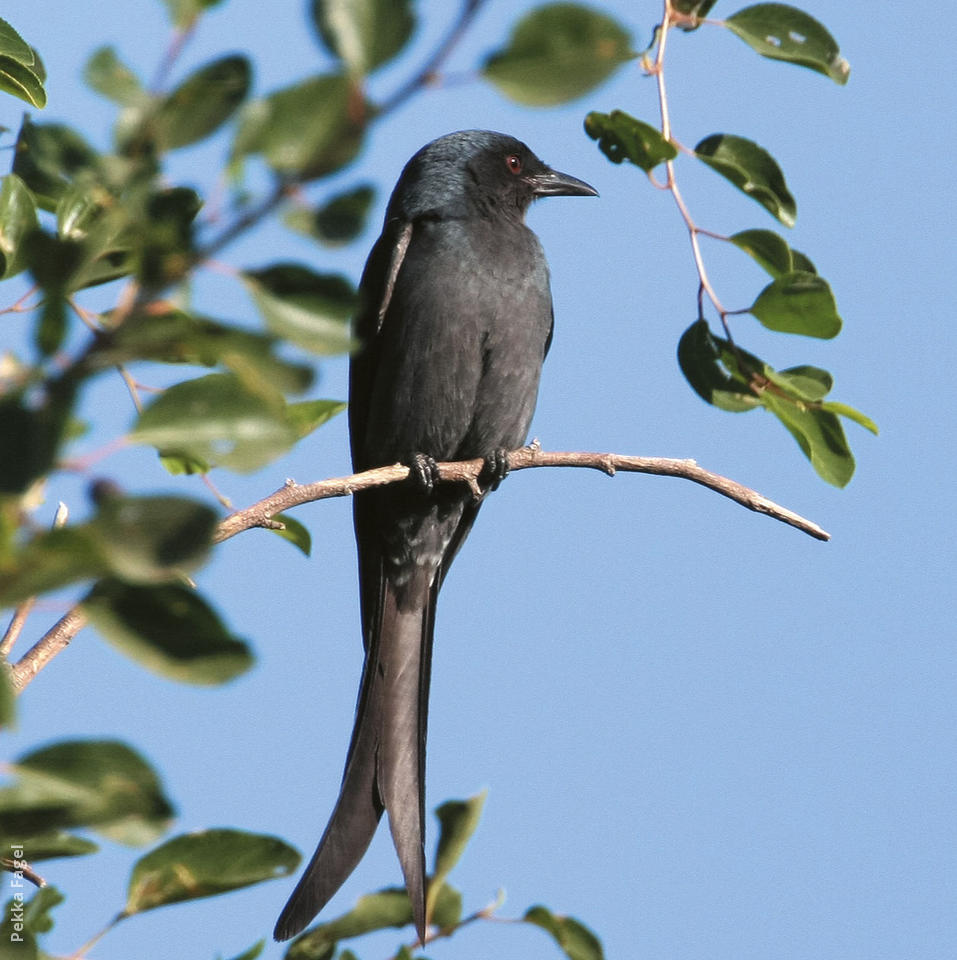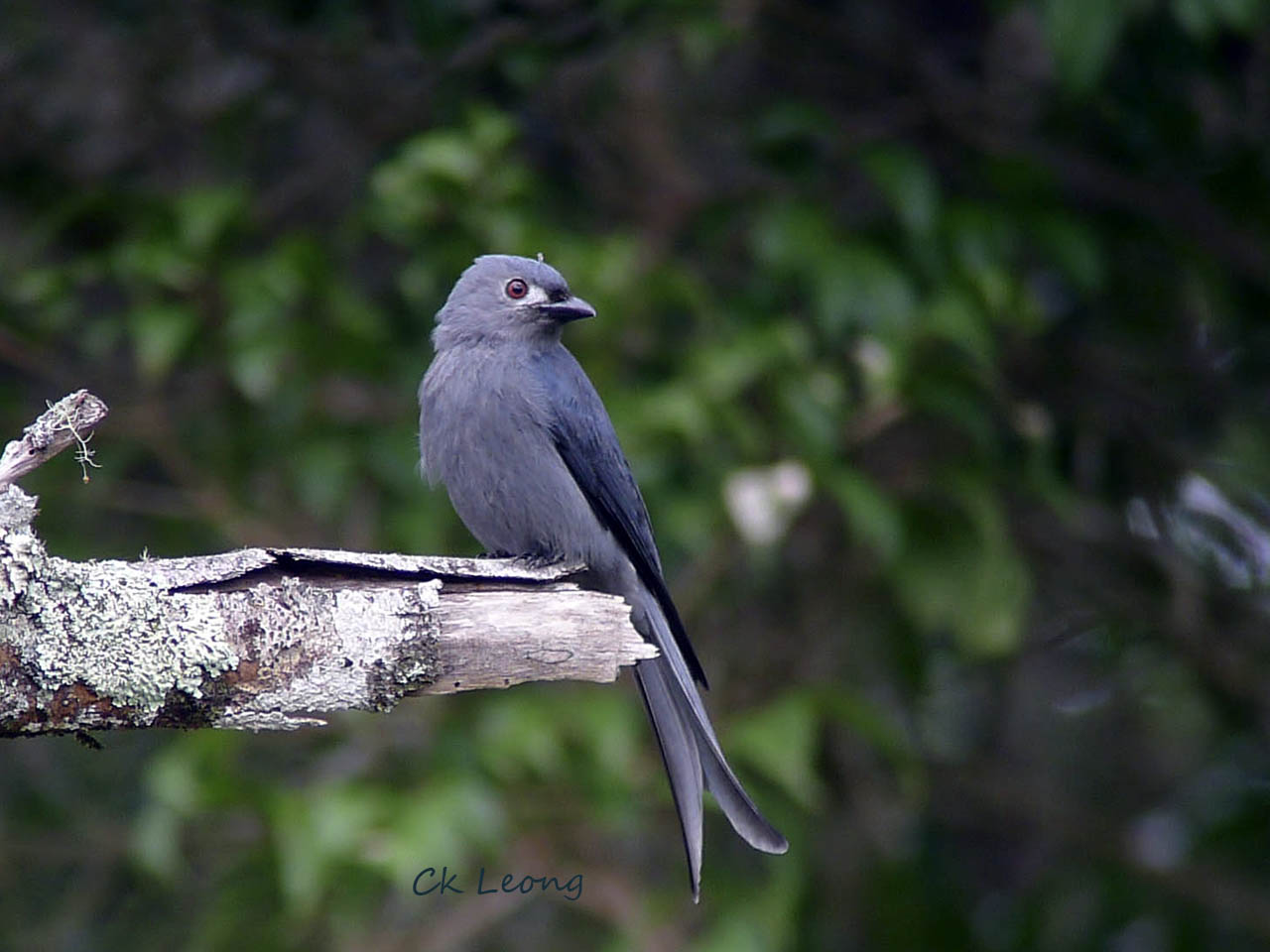
Dicrurus leucophaeus
TAXONOMY
Dicrurus leucophaeus Vieillot, 1817, “Ceylon” = Java. About
fourteen subspecies, differing principally in depth of body tone,
tail furcation, and presence and extent of a white facial mark.
All subspecies intergrade where their breeding ranges meet.
OTHER COMMON NAMES
French: Drongo cendrй; German: Graudrongo; Spanish:
Drogo Cenzio.
PHYSICAL CHARACTERISTICS
10.5–12.0 in (26–30 cm); 1.4–2.2 oz (40–60 g). The only gray
drongo, slim in body and with well-forked tail, varying from
pale to dark slaty ashen, paler ventrally and with light greenblue
gloss dorsally that disappears in the palest races; sexes
alike and rich red-eyed but immatures duller and brown-eyed.
DISTRIBUTION
Southeast Afghanistan through Himalayas, peninsular India
and Sri Lanka to all Southeast Asia north through central and
east China to south Manchuria and southeast in Greater Sundas
and off-shore islands north to Palawan (Philippines) and
east to Lombok (Lesser Sundas). More northern populations
migrate to more tropical latitudes out of breeding during November
through March.
HABITAT
Edges and open interior of taller, intact forest, including rainforest,
bamboo forest, and mixed pine-oak forest, as well as
shady village groves when resident or breeding, at altitudes
from sea level to over 9,900 ft (3,000 m); migrants commonly
enter more open woodlands, gardens and plantations at winter
quarters.
BEHAVIOR
Usually in pairs or small groups, particularly on migration,
ashy drongos work through the upper strata of trees, perching
high up and launching in swooping sallies after food, from tree
top to near the ground. Calls are a varied assortment of harsh
screeches, metallic chatterings, and pleasant musical whistles;
mimicry is often included.
FEEDING ECOLOGY AND DIET
Crepuscular aerial insectivore, feeding by sallying from vantage
perches from dawn almost until dark. Diet includes a variety of
flying insects—locusts, grasshoppers, crickets, moths and butterflies,
ants, beetles, and venomous Hymenoptera—as well as
occasional small reptiles and birds. Ashy drongos gather in
groups of up to 30 or so at termite emergences, and also rifle
nectar frequently.
REPRODUCTIVE BIOLOGY
Northern migratory populations breed in the late boreal spring
into early summer (April–June), but residents in more tropical
latitudes are less seasonal (December–February in Borneo).
Nest: a shallow saucer of lichen, dry leaves, and stems secured
with or without cobweb in a slender fork at the end of a
branchlet at 33–66 ft (10–20 m) above ground. Eggs: two to
four per clutch, 0.9–1 x 0.70–0.74 (22.5–25.0 x 17–19 mm),
variably pinkish cream to sometimes dark buff, and rather
heavily spotted and blotched with reddish brown and black.
CONSERVATION STATUS
Although the species as a whole is not threatened, its forms on
small islands off Sumatra—D. l. periophthalmicus and D. l.
siberu—are probably under threat from habitat depletion.
SIGNIFICANCE TO HUMANS
None known.
Photo Gallery of - Ashy drongo




 Animalia Life
Animalia Life